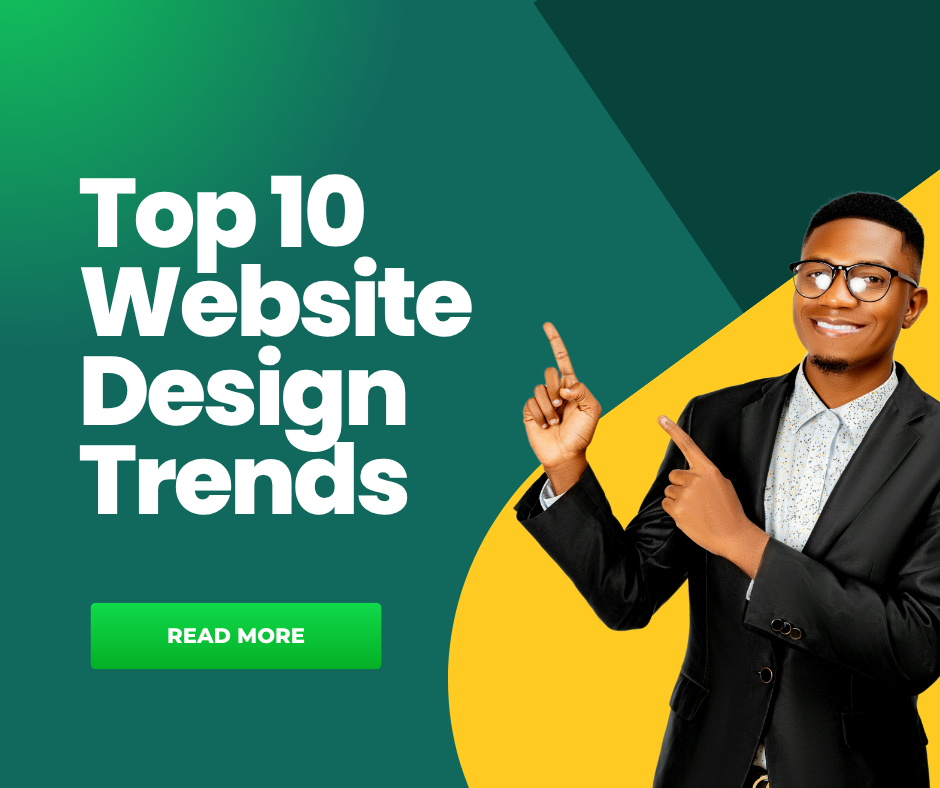Introduction
Website design trends are evolving rapidly as businesses compete for digital attention in an increasingly crowded online marketplace. In 2025, staying ahead of design innovations isn’t just about aesthetics—it’s about creating user experiences that drive engagement, conversions, and brand loyalty.
Modern consumers expect websites that load instantly, adapt seamlessly across devices, and provide intuitive navigation. The latest design trends combine cutting-edge technology with human-centered design principles to deliver exceptional digital experiences. From AI-powered personalization to immersive 3D elements, these trends are reshaping how businesses connect with their audiences online.
Understanding and implementing these website design trends will give your business a competitive edge, improve user satisfaction, and ultimately drive better business results in the digital landscape of 2025.
What Are Website Design Trends?
Website design trends represent the evolving patterns, technologies, and aesthetic preferences that shape how websites look, feel, and function. These trends emerge from user behavior changes, technological advancements, and cultural shifts that influence digital experiences.
Unlike fleeting fads, meaningful design trends solve real user problems while enhancing brand communication. They’re driven by data insights, user research, and the continuous evolution of web technologies. In 2025, these trends focus heavily on accessibility, sustainability, and personalization.
The most impactful trends typically balance innovation with usability, ensuring that new design elements enhance rather than hinder the user experience. They also consider factors like loading speed, mobile responsiveness, and search engine optimization to create websites that perform well across all metrics.
Understanding these trends helps businesses make informed decisions about their digital presence, ensuring their websites remain relevant, engaging, and effective in achieving business objectives.
10 Essential Website Design Trends for 2025
1. AI-Powered Personalization
Artificial intelligence is revolutionizing how websites adapt to individual users. Dynamic content that changes based on user behavior, preferences, and demographics creates highly personalized experiences. This includes personalized product recommendations, customized layouts, and adaptive navigation menus.
2. Immersive 3D Elements
Three-dimensional graphics and interactive 3D models are becoming more accessible and widely adopted. These elements create engaging experiences that help users better understand products and services, particularly effective for e-commerce and portfolio websites.
3. Voice User Interface Integration
Voice search optimization and voice-activated website features are gaining traction. Websites are incorporating voice navigation, audio content, and voice-activated search functionalities to accommodate changing user preferences and accessibility needs.
4. Sustainable Design Practices
Environmental consciousness is driving the adoption of green web design principles. This includes optimizing images and code for faster loading, using sustainable hosting providers, and implementing design choices that reduce energy consumption.
5. Advanced Micro-Interactions
Subtle animations and interactive elements that respond to user actions create more engaging experiences. These micro-interactions provide feedback, guide users through processes, and add personality to websites without overwhelming the interface.
6. Neomorphism and Glassmorphism
These design styles create depth and visual interest through soft shadows, gradients, and translucent elements. They provide a modern, sophisticated appearance while maintaining usability and accessibility standards.
7. Dark Mode Optimization
Dark mode has evolved from a trend to a necessity. Websites are implementing sophisticated dark mode options that reduce eye strain, save battery life on mobile devices, and appeal to user preferences for darker interfaces.
8. Asymmetrical and Broken Grid Layouts
Breaking away from traditional grid systems, designers are creating more dynamic, visually interesting layouts. These asymmetrical designs capture attention while maintaining readability and functional navigation.
9. Advanced Typography Experimentation
Custom fonts, variable typography, and creative text treatments are becoming more prominent. These typographic choices help establish brand identity and improve readability across different devices and screen sizes.
10. Augmented Reality Integration
AR features are being integrated into websites to provide immersive experiences. Users can visualize products in their environment, try virtual samples, or engage with interactive AR content directly through their browsers.
Additional Insights and Tools for Implementation
Implementing these website design trends requires the right tools and strategic approach. Popular design platforms like Figma, Adobe XD, and Webflow offer features that support these modern design elements. For 3D content, tools like Blender and Three.js provide powerful capabilities for web integration.
Analytics platforms such as Google Analytics and Hotjar help measure the effectiveness of design changes, while A/B testing tools enable data-driven decisions about trend implementation. It’s essential to prioritize trends that align with your target audience’s preferences and business objectives.
Consider using design systems and component libraries to maintain consistency when implementing multiple trends. This approach ensures cohesive user experiences while allowing for creative expression and innovation.
Troubleshooting Common Design Trend Mistakes
Many businesses make critical errors when implementing website design trends. The most common mistake is prioritizing aesthetics over functionality, leading to websites that look impressive but fail to serve users effectively.
Another frequent error is implementing too many trends simultaneously, creating overwhelming and confusing user experiences. Focus on selecting 2-3 trends that complement each other and align with your brand identity.
Performance issues often arise when businesses add complex design elements without optimizing for speed. Always test loading times and ensure that new design features don’t negatively impact website performance.
Accessibility concerns frequently emerge when trends aren’t implemented with inclusive design principles. Ensure that color contrasts, font sizes, and interactive elements meet accessibility standards. Test your designs with screen readers and keyboard navigation.
Finally, many businesses fail to consider mobile responsiveness when implementing desktop-focused trends. Always design with mobile-first principles and test extensively across different devices and screen sizes.
Frequently Asked Questions
Q: How do I choose which website design trends to implement? A: Select trends that align with your target audience’s preferences, business objectives, and brand identity. Prioritize trends that solve user problems and enhance the overall experience.
Q: Will implementing these trends affect my website’s loading speed? A: Some trends can impact performance if not implemented correctly. Always optimize images, use efficient code, and test loading speeds after implementing new design elements.
Q: How often should I update my website design? A: Major redesigns typically occur every 2-3 years, but staying current with trends through smaller updates and refinements should be an ongoing process.
Q: Are these trends suitable for all types of businesses? A: While these trends are widely applicable, consider your industry, target audience, and business goals. Some trends may be more relevant for certain sectors than others.
Conclusion
Website design trends in 2025 represent a significant shift toward more personalized, sustainable, and technologically advanced digital experiences. By implementing these trends strategically, businesses can create websites that not only look modern and engaging but also drive better user engagement and business results.
The key to success lies in balancing innovation with usability, ensuring that new design elements enhance rather than complicate the user experience. Remember that the most effective websites combine multiple trends thoughtfully, creating cohesive experiences that serve both user needs and business objectives.
As you consider implementing these website design trends, focus on your audience’s preferences, maintain consistent brand identity, and always prioritize performance and accessibility. The digital landscape will continue evolving, but businesses that stay informed and adapt strategically will maintain their competitive edge in 2025 and beyond.


